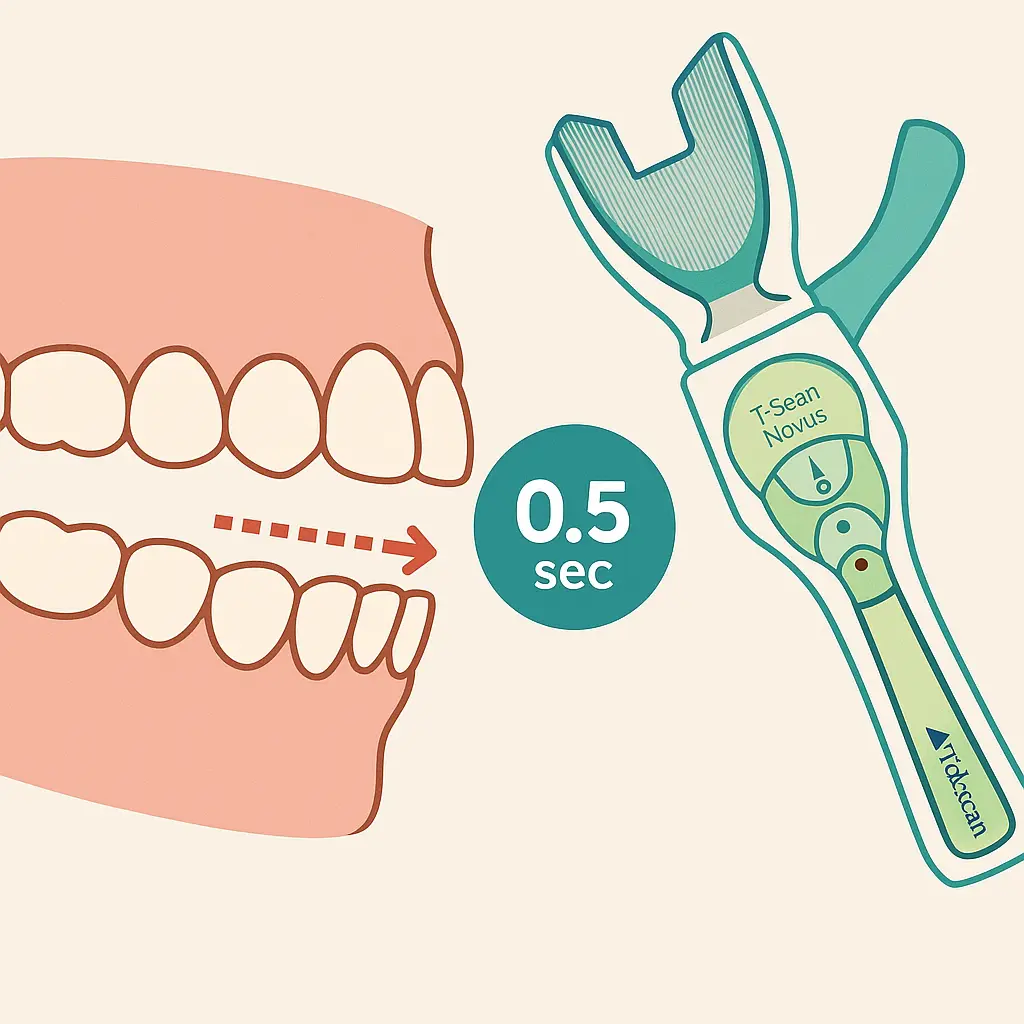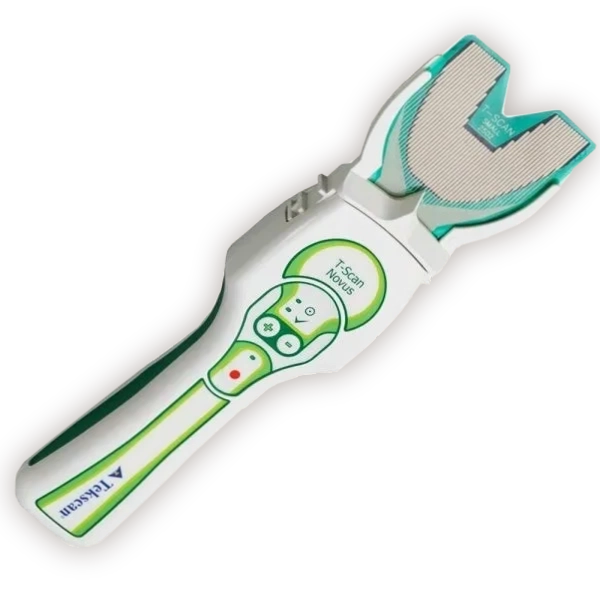Disclusion Time Reduction DTR Therapy and TMJ Care
Understanding Your Bite and Why It Matters
The way your teeth come together is called your occlusion. In a healthy bite, the teeth meet evenly, with all contacts balanced and your front teeth guiding your jaw movements. When this does not happen, the bite becomes unstable.
An unbalanced bite may cause more than just dental problems. It can contribute to:
- Headaches and migraines
- Jaw pain, stiffness, or clicking sounds
- Neck and shoulder pain
- Tooth wear and sensitivity
- Damaged crowns, fillings, or implants
- Teeth grinding or clenching (bruxism)
- Gum recession and loosened teeth
These symptoms are often signs of occlusal disease and are closely linked to TMJ dysfunction (TMD).

What Is Disclusion Time and Why Is It Important?
When you move your jaw side-to-side or forward, your back teeth should separate within 0.5 seconds. This is called Disclusion Time.
If disclusion takes longer, your jaw muscles and TMJ are forced to absorb unnecessary stress. Over time, this can lead to muscle pain, inflammation, and wear on your teeth and dental work.

What Happens During a DTR Session?
A typical session is comfortable and takes about 30 to 90 minutes:
- Data collection
- You bite on a T-Scan sensor, while EMG monitors muscle activity.
- The system records where your bite is imbalanced and which muscles are overactive.
- Precise adjustments
- Using digital feedback, we make tiny refinements by gently reshaping enamel (often less than 1 mm) or adding composite material.
- No injections or anaesthetic are usually required.
- Verification
- The bite is re-measured immediately to confirm improvements.
- Most patients feel relief before they leave the chair.
Follow-up visits may be scheduled to check stability and fine-tune if needed.
Benefits of DTR Therapy
DTR offers patients an advanced, conservative solution for TMJ pain and bite problems:
- Non-invasive and painless: no surgery, no anaesthetic, and no recovery time
- Immediate relief: many patients notice reduced muscle pain and tension straight away
- Objective precision: guided by real-time T-Scan and EMG data
- Protects dental work: reduces excessive forces that can damage crowns, bridges, or implants
- Improves function: optimises jaw movement and bite balance
- Long-lasting: reduces reliance on painkillers, splints, or nightguards
- Customised to you: treatment is tailored to your specific bite pattern and muscle activity

Why T-Scan Technology Makes the Difference
A typical session is comfortable and takes about 30 to 90 minutes:
- Data collection
- You bite on a T-Scan sensor, while EMG monitors muscle activity.
- The system records where your bite is imbalanced and which muscles are overactive.
- Precise adjustments
- Using digital feedback, we make tiny refinements by gently reshaping enamel (often less than 1 mm) or adding composite material.
- No injections or anaesthetic are usually required.
- Verification
- The bite is re-measured immediately to confirm improvements.
- Most patients feel relief before they leave the chair.
Follow-up visits may be scheduled to check stability and fine-tune if needed.
Do You Need DTR Therapy?
You may benefit from DTR Therapy if you experience:
- TMJ pain or ear pain
- Frequent headaches or migraines
- Clicking or popping sounds in the jaw
- Muscle tightness in the face, neck, or shoulders
- Bruxism (teeth grinding or clenching)
- Worn, sensitive, or fractured teeth
- Loosened gums or failed dental restorations
The Bigger Picture: Occlusion and Systemic Health
Research shows that an unbalanced bite can contribute not only to TMJ pain but also to wider health concerns:
- Periodontal stress: gum inflammation and bacterial spread into the bloodstream
- Neurogenic inflammation: nerve-driven pain linked to headaches and chronic fatigue
- Airway compromise: poor bite alignment can reduce airway space and increase risk of sleep-disordered breathing
- Muscle overload: hyperactive jaw muscles contribute to body-wide inflammation and pain syndromes
Correcting the bite through DTR Therapy, splint therapy, or orthodontics such as Invisalign can help restore balance and reduce the body’s overall inflammatory load.

In Summary
Your bite affects much more than your teeth. By measuring and correcting disclusion time with advanced tools like T-Scan and EMG, DTR Therapy offers an accurate, non-invasive way to relieve TMJ pain, protect your teeth, and improve overall wellbeing.
Head Pain, Headache
Forehead
Temples
“Migraine” Type
Sinus Type
Shooting Pain Up Back of Head
Hair and/or Scalp Painful to Touch
Brain Fog
Ear Problems
Hissing, Buzzing or Ringing
Decreased Hearing
Ear Pain, Ear Ache, No Infection
Clogged, “Itchy” ears
Vertigo, Dizziness
Eyes
Pain Behind Eyes
Bloodshot Eyes
May Bulge Out
Sensitive to Sunlight
Weeping Eyes
Double Vision
Problems Tracking While reading
Eye Muscle Twitching
Jaw Problems
Clicking, Popping Jaw Joints
Grating Sounds
Pain in Cheek Muscles
Uncontrollable Jaw and/or
Tongue Movements
Mouth
Discomfort
Limited Opening of Mouth
Inability to Open Smoothly
Jaw Deviates to One Side When Opening
Locks Shut or Open
Can’t Find bite
Neck Problems
Lack of Mobility, Stiffness
Neck Pain
Tired, Sore Muscles
Shoulder Aches and Back Aches
Arm & Finger Numbness and/or Pain
Teeth
Clenching, Grinding at Night
Looseness and Soreness of Back Teeth
Tooth Sensitivity to Cold or Ice
Throat
Swallowing Difficulties
Laryngitis /Sore Throat With No Infection
Snoring / Acid Reflux
Voice Irregularities or Changes
Frequent Coughing or Constant Clearing of Throat
Feeling of Foreign Object in throat Constantly
Feeling of ‘hand resting on throat”
